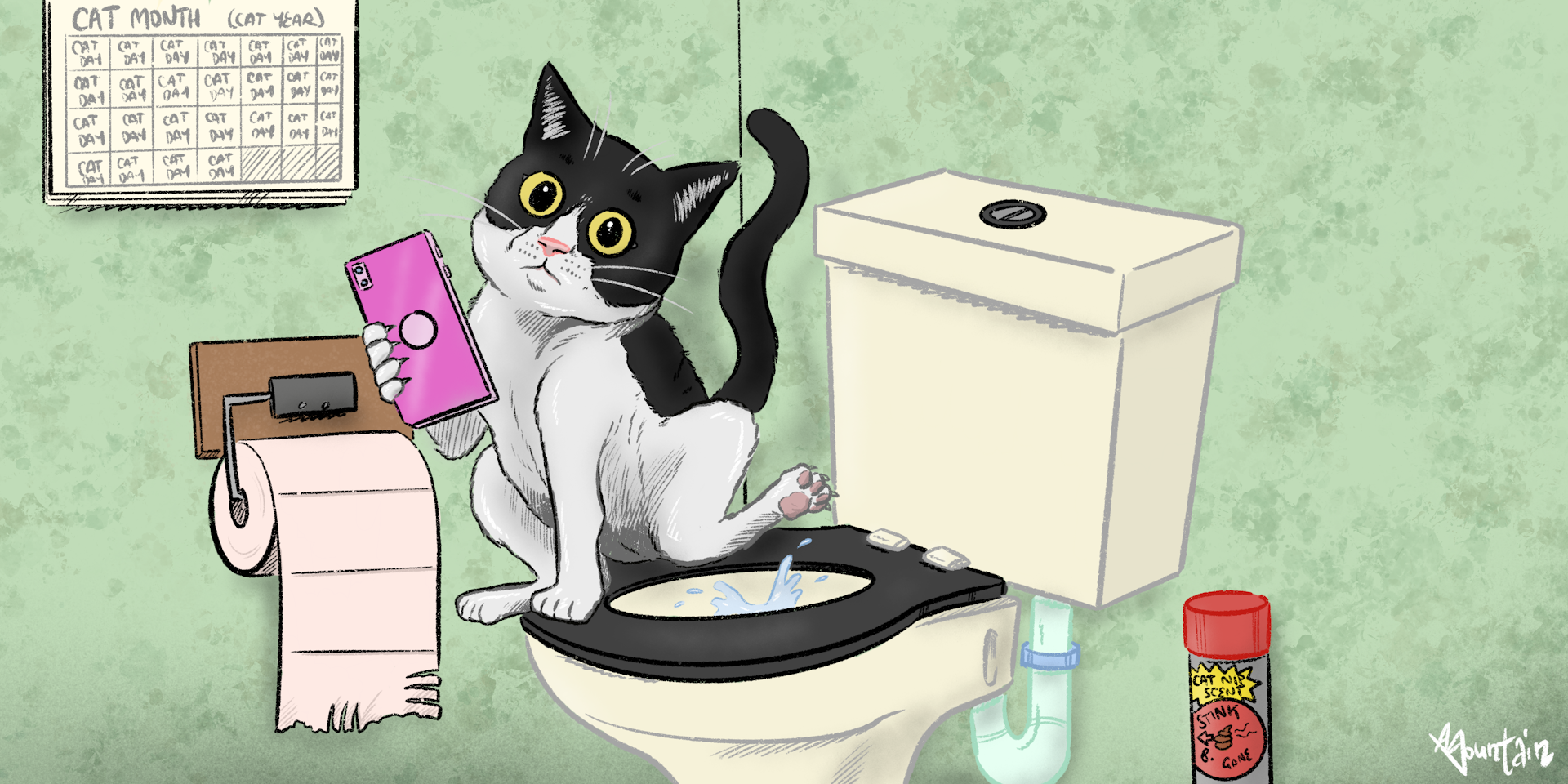Avoid Clogs and Damage: Don't Flush Cat Poop Down Your Toilet - Professional Insights
Avoid Clogs and Damage: Don't Flush Cat Poop Down Your Toilet - Professional Insights
Blog Article
Just about everyone has their private way of thinking when it comes to How to Dispose of Cat Poop and Litter Without Plastic Bags.

Intro
As pet cat proprietors, it's vital to bear in mind just how we take care of our feline pals' waste. While it may seem hassle-free to flush feline poop down the bathroom, this method can have damaging consequences for both the environment and human health.
Environmental Impact
Flushing feline poop introduces dangerous virus and bloodsuckers right into the water, presenting a significant risk to water communities. These impurities can negatively influence marine life and concession water top quality.
Wellness Risks
Along with environmental worries, flushing cat waste can also present wellness risks to people. Feline feces might include Toxoplasma gondii, a bloodsucker that can cause toxoplasmosis-- a potentially serious ailment, particularly for expecting females and people with damaged immune systems.
Alternatives to Flushing
Thankfully, there are safer and more responsible means to deal with pet cat poop. Take into consideration the complying with alternatives:
1. Scoop and Dispose in Trash
One of the most typical method of dealing with pet cat poop is to scoop it into a biodegradable bag and toss it in the trash. Make certain to use a dedicated trash inside story and get rid of the waste without delay.
2. Use Biodegradable Litter
Go with naturally degradable cat trash made from materials such as corn or wheat. These litters are eco-friendly and can be safely gotten rid of in the garbage.
3. Bury in the Yard
If you have a backyard, think about burying feline waste in a designated location away from veggie gardens and water resources. Make sure to dig deep adequate to stop contamination of groundwater.
4. Mount a Pet Waste Disposal System
Buy a pet dog garbage disposal system specifically developed for cat waste. These systems make use of enzymes to break down the waste, reducing smell and ecological effect.
Conclusion
Responsible pet possession prolongs beyond offering food and shelter-- it additionally involves proper waste management. By avoiding flushing pet cat poop down the bathroom and selecting different disposal approaches, we can lessen our ecological footprint and shield human health.
Why Can’t I Flush Cat Poop?
It Spreads a Parasite
Cats are frequently infected with a parasite called toxoplasma gondii. The parasite causes an infection called toxoplasmosis. It is usually harmless to cats. The parasite only uses cat poop as a host for its eggs. Otherwise, the cat’s immune system usually keeps the infection at low enough levels to maintain its own health. But it does not stop the develop of eggs. These eggs are tiny and surprisingly tough. They may survive for a year before they begin to grow. But that’s the problem.
Our wastewater system is not designed to deal with toxoplasmosis eggs. Instead, most eggs will flush from your toilet into sewers and wastewater management plants. After the sewage is treated for many other harmful things in it, it is typically released into local rivers, lakes, or oceans. Here, the toxoplasmosis eggs can find new hosts, including starfish, crabs, otters, and many other wildlife. For many, this is a significant risk to their health. Toxoplasmosis can also end up infecting water sources that are important for agriculture, which means our deer, pigs, and sheep can get infected too.
Is There Risk to Humans?
There can be a risk to human life from flushing cat poop down the toilet. If you do so, the parasites from your cat’s poop can end up in shellfish, game animals, or livestock. If this meat is then served raw or undercooked, the people who eat it can get sick.
In fact, according to the CDC, 40 million people in the United States are infected with toxoplasma gondii. They get it from exposure to infected seafood, or from some kind of cat poop contamination, like drinking from a stream that is contaminated or touching anything that has come into contact with cat poop. That includes just cleaning a cat litter box.
Most people who get infected with these parasites will not develop any symptoms. However, for pregnant women or for those with compromised immune systems, the parasite can cause severe health problems.
How to Handle Cat Poop
The best way to handle cat poop is actually to clean the box more often. The eggs that the parasite sheds will not become active until one to five days after the cat poops. That means that if you clean daily, you’re much less likely to come into direct contact with infectious eggs.
That said, always dispose of cat poop in the garbage and not down the toilet. Wash your hands before and after you clean the litter box, and bring the bag of poop right outside to your garbage bins.
https://trenchlesssolutionsusa.com/why-cant-i-flush-cat-poop/
As an avid person who reads on Can You Flush Cat Poop Down The Toilet?, I think sharing that chunk was sensible. Do you know about somebody else who is fascinated with the subject? Take a moment to promote it. I cherish reading our article about Don’t flush cat feces down the toilet.
Click Report this page